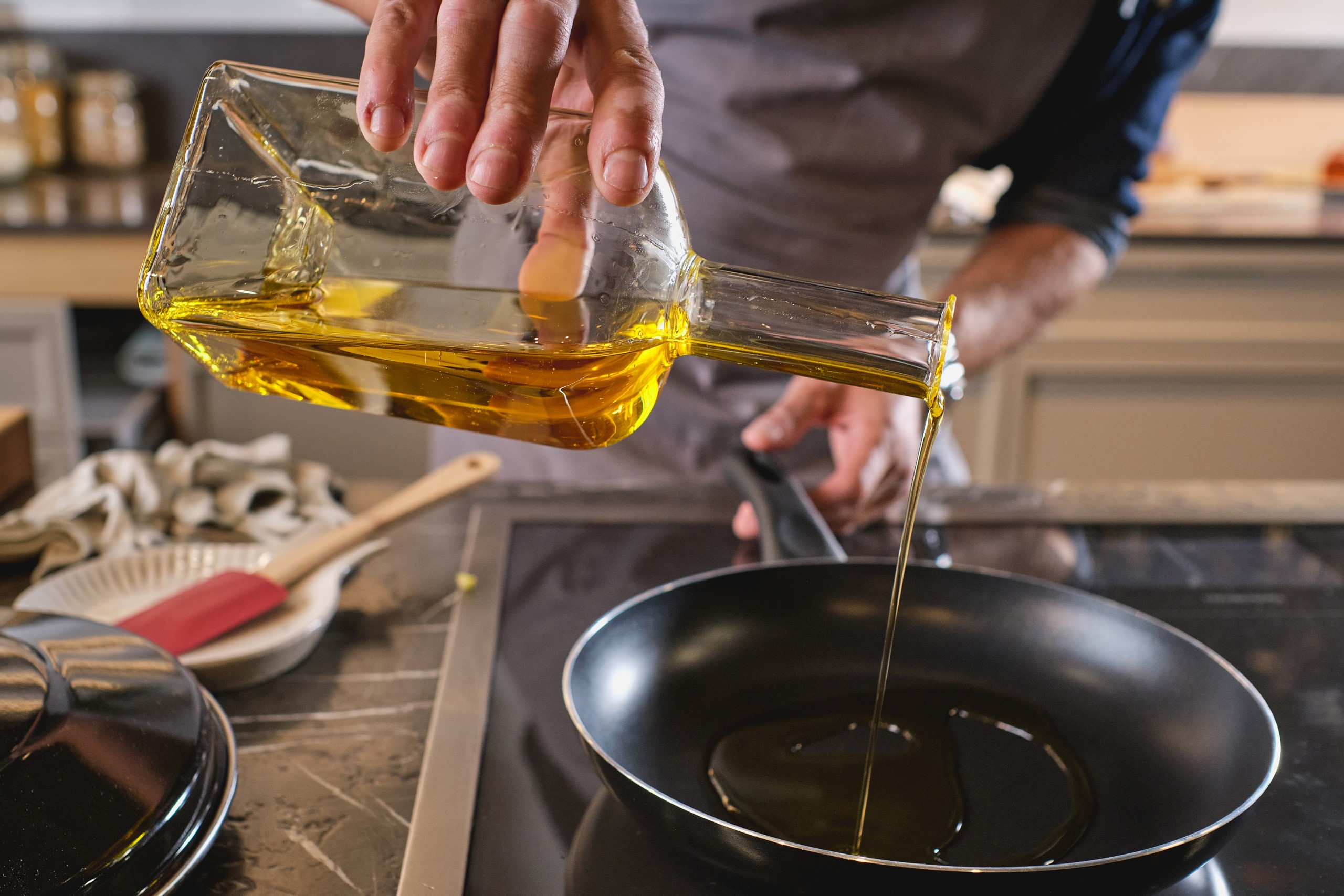Olive oil is more than just an essential ingredient in kitchens; it is the cornerstone of artistry for chefs. From ancient Greece and Rome to today’s Michelin-starred restaurants, this “liquid gold” holds a unique place in world cuisines. So, how do world-renowned chefs and traditional kitchens use olive oil? Which types of olive oil are preferred in the best recipes? In this post, we will explore the significance of olive oil in the world of gastronomy, insights from famous chefs, and its various culinary applications.
Olive Oil: More Than an Ingredient, It’s an Art
Olive oil does more than enhance flavor; it defines the character of a dish. A good olive oil adds depth, texture, and aroma, transforming meals from ordinary to extraordinary. From Michelin-starred restaurants to traditional kitchens, the world’s top chefs define the power of olive oil in the kitchen as follows:
Massimo Bottura (Osteria Francescana, Italy): “Olive oil is not just an ingredient; it is the soul of Italian cuisine. It is what elevates even the simplest pasta dish to sophistication.”
Ferran Adrià (El Bulli, Spain): “Using olive oil correctly is like understanding the chemistry of food. Even in molecular gastronomy, knowing when and which type of olive oil to use is key to achieving the best results.”
Yotam Ottolenghi (Middle Eastern Cuisine, London): “Olive oil is a cornerstone of Middle Eastern cuisine, just as it is in Mediterranean cooking. A high-quality extra virgin olive oil can enhance the flavor profile of spices, bringing out their full potential.”
In gastronomy, viewing olive oil as just a simple oil would overlook the richness it offers. Let’s take a look at how chefs choose olive oils from different harvest seasons for specific dishes in their kitchens.
Early Harvest or Ripe Harvest? Which Type Do Chefs Prefer?
1. Early Harvest Olive Oil:
- Rich in intense flavors with a slightly bitter and peppery taste.
- Ideal for cold dishes, salads, and appetizers.
- One of the most preferred uses by chefs is raw consumption.
Recommended Uses:
- Raw vegetables and salads
- Drizzled over fresh bread and bruschetta
- In seafood appetizers (shrimp carpaccio, octopus salad)
2. Ripe Harvest Olive Oil:
- Offers a softer, balanced, and fruity flavor profile.
- Ideal for cooking and frying.
- Preferred for adding depth to dishes.
Recommended Uses:
- Pasta and risottos
- Red and white meat dishes
- Roasted vegetables and olive oil-based dishes
The Use of Olive Oil in Famous Kitchens
1. Italian Cuisine: The Secret of Legendary Flavors
Italian chefs consider extra virgin olive oil an essential ingredient for pizza, pasta, and seafood. Olive oil is the key component in fresh basil pesto sauce. Similarly, when making risotto, using olive oil instead of butter creates a lighter and more balanced texture.
Italian Chef Suggestions:
- A Caprese Salad with fresh mozzarella and tomatoes pairs perfectly with early harvest olive oil.
- In a simple yet impressive dish like Spaghetti Aglio e Olio, high-quality extra virgin olive oil enhances the flavor.
2. Spanish Cuisine: The Role of Olive Oil in Tapas Culture
In Spanish cuisine, olive oil is an essential ingredient in dishes like gazpacho, tapas such as patatas bravas, and legendary recipes like paella. Ferran Adrià, in particular, advocates for using olive oil to preserve its aromatic structure, adding more depth to the dishes.
Spanish Chef Suggestions:
- Olive oil-infused seafood tapas provide the ultimate flavor experience.
- Roasted red peppers and anchovy-marinated olives are finished with early harvest olive oil for a perfect complement.
3. French Cuisine: New Flavors with Olive Oil
Although butter is typically used in French cuisine, olive oil holds a significant place in the kitchens along the Mediterranean coast. In Provençal cuisine, vegetable dishes like ratatouille are often cooked with generous amounts of olive oil.
Chef Recommendations from France:
- For marinating chicken and fish, a soft and balanced olive oil is recommended.
- Olive oil sauces mixed with fresh herbs are frequently used in French cuisine.
The 3 Golden Rules for Using Olive Oil Professionally
- Distinguish between hot and cold applications. For dishes cooked at high heat, mature harvest olive oil with lighter, fruitier flavors should be preferred.
- Don’t neglect using it raw to enhance flavor. Especially early harvest olive oil maintains its natural aroma when drizzled over dishes.
- Pay attention to storage conditions. Olive oil can quickly lose its quality when exposed to light and air, so it should be stored in dark glass bottles and cool places.
Olive oil is not just an ingredient; it’s a culture and a heritage of flavor. Renowned chefs and traditional kitchens create extraordinary tastes by using olive oil in the most precise way. You too can create exquisite flavors in your kitchen with this precious liquid.




